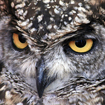Materials
Main Aims
-
By the end of the lesson ss will have practised structures with CAN/CAN'T in the context of speaking about animals' abilities (animals' movements).
Subsidiary Aims
-
By the end of the lesson ss will have revised vocabulary related to animals and animal body parts.
-
They will have also practised pronunciation of some verbs and sentences.
Procedure (37-40 minutes)
Show T's favourite animals and elicit names of animals that ss are familiar with.
T organises ss in groups of 3 or 4 and tells them they are going to match animal pictures with words. The group who finishes first is the winner. Ss sit in groups and do the matching activity, T monitors. T asks ss to take turns to read the names of animals from the board.
T shows ss the 2 toy birds and elicit their names. T asks questions about animals' abilities showing pictures and miming different movements to help children answer. Then she writes the verbs next to each picture and drills. butterfly - fly fish - swim rabbit - hop and jump worm - slither cat - climb a tree
T organises ss in pairs and tells them they are going to link each animal on the worksheet with a movement it can do. T models and gives ss their worksheets. Ss do the task in pairs. T monitors. T draws a Venn diagram on the WB and gets ss to use the worksheet and CAN DO structures to give information about different animals' movements. Ss answer and T writes the animals in the circles.
T shows ss a crocodile cut-out. She asks ss questions to get the description of a crocodile. She writes her questions and the ss' answers on the WB. What animal is it? Is it big? What colour is it? Has it got a long tail? Has it got scales? Has it got 2 legs? Can it swim? Can it jump? Can it fly? CAN/CAN'T sentences drilling.
T explains the rules of the game, chesting the card with a duck. Each group gets a set of animal cards. The first s turns over a card from the deck and doesn't show it to the other ss. Check with an ICQ that they understood they mustn't show it. The other ss in the group take turns to ask questions and guess the animal. The group cannot ask more than 8 questions. The s who guesses the animal using the question "Is it a ........ ? (duck)" keeps the card. If the group cannot guess after having asked 8 questions, the s who picked the card keeps it. Ask another ICQ questions to remind them about the 8 questions. The winner is the player with the most cards after a 10-minute period of time. If a s asked an "Is it a ........ ?" question and didn't guess, he/she has to continue to ask general questions. T gets ss in groups of 3 or 4 and models with a group with . Ss play the game and T monitors providing error correction and making sure ss do not use L1.
While ss are playing the game, T monitors the speaking activity and provides FB and error correction.
T asks ss if they have enjoyed the game, thanks them for their participation and says goodbye.

